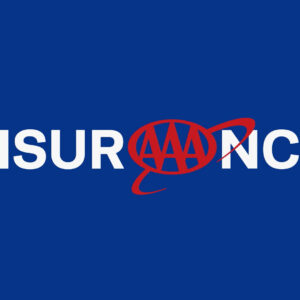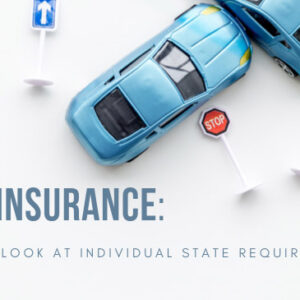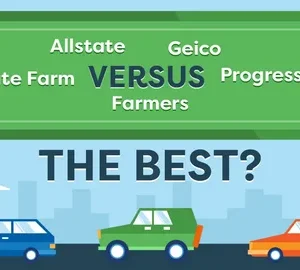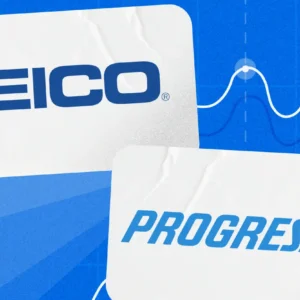Introduction
Welcoming a teen driver into your family — it’s exciting, empowering… and expensive. With insurance premiums for teen drivers soaring, choosing the right insurer is crucial. Enter Progressive: a top 2 US auto insurer with innovative tools, teen‑specific discounts, and plenty of customization. But is it truly ideal for teen drivers in 2025? In this ultimate review, we’ll explore pricing, benefits, pitfalls, real user insights, and smart cost‑saving tactics.
🔍 Why Teen Drivers Cost So Much
Before zooming into Progressive’s offerings, it helps to understand why teen rates skyrocket:
- Inexperience: Teens (16–19) have crash rates 3× higher than drivers aged 20+ (investopedia.com, thezebra.com).
- Age and gender: Male teens often pay ~9 % more than females at age 16 (thezebra.com).
- High-risk demographics: By June 2025, teen premiums averaged $7,658/year for 16‑year‑olds nationwide (thezebra.com). Adding to family policies cost about $3,048 on average (moneygeek.com).
Instant takeaway:
Understanding these underlying risks means knowing costs aren’t insurer gimmicks—they reflect real-world danger. But smart tools and discounts can ease the burden (more on that shortly).
Progressive Snapshot: What Makes It Unique
Snapshot® is Progressive’s usage‑based insurance (UBI) system. Plug in the OBD‑II device, drive safer (smooth braking, fewer miles, calm driving times), and earn meaningful discounts—all personalized .
Why teen families love it:
- Hands‑on feedback teaches safer habits.
- Lowering risky behavior can lead to significant savings.
- Builds trust and encourages responsibility in young drivers.
Pro Tip: Teens love feedback. Use Snapshot results to create safe‐driving challenges and monitor progress together.
Teen‑Specific Discounts & Tools at Progressive
Progressive’s teen perks are more than just marketing—they really help:
- Teen Driver Discount (under 18): Reduces premium after the first policy year .
- Good Student Discount: GPA “B” or above nets ~5 % off .
- Distant Student Discount: Student living >100 miles away without a car = savings .
- Multi‑Car & Bundling: Combine teen on family policy or add multiple vehicles to maximize saving .
Plus:
- Accident Forgiveness, Continuous Insurance, Pay‑in‑Full, and Online Quote bonuses.
- Excellent mobile app and digital tools get praise from both teens & parents (noblequote.com).
Progressive vs. National Averages: Rate Snapshot
| Category | Progressive Average | National Average |
|---|---|---|
| Full Coverage (all drivers) | ~$2,155/year (nerdwallet.com) | ~$2,290/year |
| Adding a teen to policy | ~$1,080/year | — |
| Adding a 16‑year‑old | ~$340/year | — |
| Average teen family‑policy cost | ~$3,048/year | — |
| Teen standalone policy (16‑year‑old) | ~$7,658/year | — |
What to notice:
- Progressive’s full coverage sits slightly under national average—solid value.
- Adding a teen is cheaper (
$340–1,080/year) than individual teen policies ($4,866–7,658/year) . - Incentives like Snapshot, student, distant discounts further lower effective cost.
Real‑World Experiences: What Families Say
Here are authentic voices from users sharing Progressive teen‑insurance experiences:
“Adding a 16 year old to your policy does spike the rates… If you wish to add a sports car… your premiums will spike much further.”
“Progressive specifically asked me who drives what car… my rate actually went down when I told them I don’t ever drive her car…”
Takeaway:
Insurance tools get granular—primary drivers, vehicle assignments matter. Proactively discussing car usage can yield savings.
Pros and Cons: Is Progressive Right for Your Teen?
✅ Pros
- Competitive pricing: Teen rate adds (~$340–1,080/year) + plentiful discounts = better than many peers.
- Usage‑based insight: Snapshot educates teens through actual driving data.
- Well‑rated digital experience: 4.5/5 on NerdWallet; high marks for mobile interface
- Flexible customization: Bundle discounts, multi‑car options, accident forgiveness—great for growing families.
❌ Cons
- Mixed customer satisfaction: Some dissatisfaction in claim handling compared to peers.
- Teen discounts delay: Teen Driver discount applies after year one—no instant relief (progressive.com).
- State‑restrictions: Snapshot unavailable in CA, NC, AK, HI (en.wikipedia.org).
Smart Cost‑Saving Tips for Adding Teens
- Always add teens to family policy
- Standalone teen policies can cost ~$7–8K/year. Adding them to yours drops cost to ~$1–3K/year .
- Bundle vehicles & insurance types
- Multi‑car and home‑auto bundles save ~12 %+.
- Use telematics programs
- Snapshot can save ~$322 annually on good driving .
- Encourage good grades & driver education
- Good Student and distant student discounts offer immediate savings.
- Choose a safe vehicle
- Insure the teen into a safe, low‑risk car—not a sports car—to avoid major premium spikes .
- Review vehicle assignment
- Clarify primary drivers for each vehicle—Progressive asks, and the assignment influences your rates.
- Raise deductibles
- If you can pay more out‑of‑pocket in case of an accident, you’ll pay less monthly.
- Pay in full & go paperless
- Discounts (~7 % online quote; plus pay‑in‑full savings) stack up.
Snapshot in Action: How It Works
- Install the OBD‑II device (or opt for app-based tracking).
- Drive normally for 30 days—drive safe and smart.
- Earn initial discount based on habits.
- Review six‑month results—better habits = bigger renewal discount.
- Return device if opting out later.
Great for teens: instant feedback helps them tweak behavior in real time.
Case Study: A Real‑Life Scenario
- Family of four in medium‑risk state
- Teen, 16, added to 2023 Toyota Corolla
- Snapshot used, GPA above 3.5; opts for $500 deductibles
Premium Breakdown:
- Base policy (parents): ~$2,000/year
- Teen add-on: +$1,080 (WalletHub average) or +$340 (Forbes 16‑year‑old rate)
- Discounts:
- Teen Driver (after yr‑1)
- Good Student (~5 %)
- Snapshot (~$322)
- Multi‑Car (~12 %)
- Pay‑in‑Full & Online (~7 %)
Outcome:
Effective teen addition cost ≈ $600–800/year. That’s a quarter or even a tenth of a standalone teen policy.
Progressive vs Other Insurers
Price Comparison:
- Progressive: ~$743/year family teen policy
- GEICO: ~$601 (family) but lacks Snapshot (moneygeek.com)
- Nationwide: ~$645 (family) (moneygeek.com)
- State Farm: $781 individual policy cheap
While GEICO and Nationwide offer similar prices, Progressive’s telematics and digital tools provide educational and behavioral benefits.
Satisfaction & Market Position:
Progressive ranks high for digital usability but calls for improvement on claims and service, per NerdWallet and U.S. News scoring (noblequote.com).
Should You Pick Progressive for Your Teen?
If you want:
- A tech‑savvy approach (Snapshot + app insights)
- Immediate and layered discounts
- Flexibility in vehicle and driver assignments
…then Progressive stands out in 2025. Yes, pricing is competitive, but the added educational aspect and teen‑friendly flexibility make it shine.
That said:
- If claims service is your top priority, you might want to compare J.D. Power scores and explore top‑ranked insurers.
- In states where Snapshot is unavailable, the telematics benefit disappears (e.g., CA, NC, AK, HI).
Conclusion: Final Thoughts & Action Plan
Progressive Auto Insurance offers a thoroughly modern, flexible, and cost-effective option for families with teen drivers—provided you use its tools smartly.
Final checklist before acting:
- Get a tailored quote and compare with GEICO/Nationwide/State Farm.
- Add your teen to a family policy—not standalone.
- Opt into discounts early (GPA, distant student, Snapshot).
- Drive safe and involve the teen in reviewing Snapshot reports.
- Revisit your policy yearly for improved discounts and claim-free forgiveness.
Used wisely, Progressive can turn that hefty teen insurance bill into a manageable investment—while teaching safe, responsible driving along the way. That’s value beyond dollars.
Ready to explore?
- Get a personalized Progressive quote
- Consider GEICO/Nationwide for baseline comparison
- Use our cost‑saving checklist to maximize value
➡️ Driving teen? Progressive might just be the perfect co‑pilot.
All data referenced is accurate as of June 2025 based on NerdWallet, WalletHub, Forbes, MoneyGeek, The Zebra, and Progressive resources.






